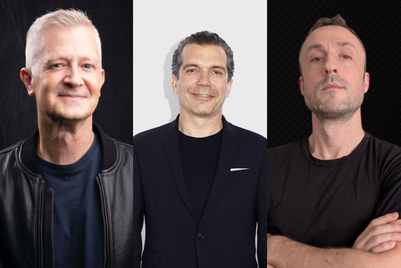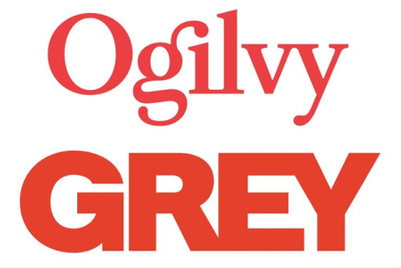
Campaign Asia-Pacific sat down with Graves on a recent visit to Hong Kong.
Why do PR and advertising need science?
Our agencies often face having to change mindsets. But if you go into it the way most agencies do, they try to be clever, or they do a bit of traditional message testing. But they don’t understand the hundreds of ways they backfire. Science can illuminate and highlight the positives and negatives of an approach, which in turn informs the creative. So often we get asked by clients to help them build a cause or a movement maybe around purpose branding or CSR. If they catapult themselves into the messaging without understanding this part, things can go very wrong.
Why hasn’t this been done before?
No one else is an insane as I am or as obsessed as I am. This paper is seven years of research digested and translated for the lay person. I’d also like to be clear that this isn’t neuromarketing—that’s correlative at best. This is based on solid research papers across scientific practices such as neuroscience, behavioural science and psychology.
What makes your paper stand out?

No one was really connecting the verticals towards communication. For example, let’s start with changing someone’s mind. Why is it so hard? The solution lies in the narrative theory part of it. Scientists like Raymond Mar and Melanie Green, who are narrative theory experts, found that great pieces of fiction have the capability to generate mirror neurons. Mirror neurons, something scientists think is one of the greatest discoveries, are the roots of empathy. They were discovered in a neuroscience lab at the University of Parma in the early 1990s. What they learnt was that, if I were to pick up a tall glass of cold water, my brain would activate the motor skills necessary for me to balance it without spilling. Yet, by merely watching me, your brain would mirror me, activating the very same parts of the brain even though you are not picking up anything.
Then Uri Hassan, assistant professor at the Princeton Neuroscience institute, found that when listening to a story, the listener’s brain did indeed mirror the teller, but at a slight delay. But as the story evolved, the listener mirrored the storyteller synchronously with no delay.
Meanwhile. Raymond Mar, a psychologist at York University in Toronto, found that as we read text, our brain simulates real-world aspects triggered by the text. He went on to say that immersive stories are quite effective at changing minds.
Finally, professor of social psychology and researcher on narrative transport, Melanie C Green wrote that despite the belief that individuals formed their beliefs based on fact… data confirms that individuals often base real-world judgements on fiction.
Now how can you combine all the silos and use this in a narrative? What language, what technique can you use to make people fire mirror neurons? The answer could lie in the ‘identifiable victim effect’. Which is basically the only thing Stalin and Mother Theresa agreed on: that individuals are more likely to feel empathy for one person than for a large vaguely defined group with the same need.
Can you illustrate this theory with examples?
Here are two examples I use in a workshop. Both are about retirement, but one respects the science and the other says, screw the science, basically.
First watch this ad by Ameriprise:
Now Droga5’s work for Prudential
The conclusion is, don’t do a collage or a montage. Tell the story of a person, include irrelevant details that make her real. Because scientists have found that empathy doesn’t scale. Human beings just don’t have the brain power to maintain it for more than one person at a time. They can feel bad, but it’s not genuine empathy.
What other top findings from your research do you feel communication needs to hear?
There’s a big difference between explicit and implicit. The world has fallen in love with explicit forever. But as we grow more cynical, we smell it as marketing and we don’t like being sold to or manipulated. Implicit is more respectful of the audience but scarier for clients and agencies. You have to trust that they will get the feeling and derive the meaning from the feeling.
How would this work in a time of brand crisis?
You have to ask why are people reacting negatively and how do you restore trust once a company gets into trouble. Take Toyota in the US as an example. First they did a traditional spot, which did little to change mindsets. But then they went on to do non-traditional stuff. They took a family who recounted minute by minute an accident they were in. The kid says, ‘I could hear the glass breaking’, the mother talks about how hard it was to turn around to make sure the kids were alive. They all survived, it was a bad crash… so maybe the car (a Toyota) wasn’t too bad.
Then Toyota put out a series on the web of workers in their factories telling, one at a time, how they do their job. There was one guy who has been painting cars for 14 years. It was so dull. But it’s not a spot. That guy… he won’t even eat garlic because it may get into the paint through his skin. Would you want him to paint your car? Hell yes.
All this is fascinating. But there is only one of you and Ogilvy is very, very big. How are you planning on disseminating this understanding and approach to communications?
Scaling up is a huge challenge and it’s taking time. There is only one of me, which is a valid point, so I’ve enlisted others who have an aptitude in and a curiosity for this sort of thing and whose jobs cross over into planning. In Asia I have Marianne McDonald [MD of strategy and measurement for Ogilvy PR]. Also, I now have a full-time treasure, a WPP MBA Fellow, who is helping me craft the education programme. We’re thinking of an app, as in mobile-app, approach to education and working directly with clients.
What are your ambitions for this programme?
We can’t expect all of Ogilvy to become literate at this. There are barriers to what works and in enlisting a movement sustainably, and part of it is relevance filters. So our approach is to distil only what applies to the area and specialisation an employee works in. Someone who specialises in FMCG PR, for example, would only be keen on the sections to do with what influences decision-making. Corporate will be more interested in the rest.
What are your goals, time-wise?
The goal is to become by 2015 scaled up globally. To get in front of every client and every prospect with more effective solutions. We’re developing tools that will help us scale and every office will have access and that will guide them.


.jpg&h=334&w=500&q=100&v=20250320&c=1)



.png&h=334&w=500&q=100&v=20250320&c=1)
.png&h=334&w=500&q=100&v=20250320&c=1)


.png&h=334&w=500&q=100&v=20250320&c=1)


.jpg&h=268&w=401&q=100&v=20250320&c=1)


.jpg&h=268&w=401&q=100&v=20250320&c=1)
.png&h=268&w=401&q=100&v=20250320&c=1)

